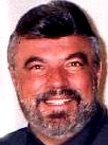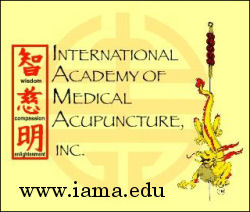Acupuncture & TCM Articles

Acupuncture Articles
by John A. Amaro L.Ac., Dipl.Ac.(NCCAOM), DC
 Dr. Amaro is an internationally known author, lecturer and practitioner beginning his practice of Acupuncture and Chiropractic in 1971. He has led 13 diplomatic Acupuncture study tours of The People's Republic of China escorting more than 500 doctors and practitioners. He has personally studied Acupuncture in nine separate Asian nations. Dr. Amaro is an internationally known author, lecturer and practitioner beginning his practice of Acupuncture and Chiropractic in 1971. He has led 13 diplomatic Acupuncture study tours of The People's Republic of China escorting more than 500 doctors and practitioners. He has personally studied Acupuncture in nine separate Asian nations.
He has received Certification in Acupuncture through the Columbia Institute of Chiropractic in 1973. This was one of the first Acupuncture postgraduate education programs for physicians in North America commencing in 1972.
He has been certified by the Waseda Acupuncture College in Tokyo, Japan in 1974 and graduated from the Chinese Medical Institute, Kowloon, China in 1976. He had previously taken postgraduate studies at the Tai Chung Medical School Taipei, China 1973.
Acupuncture Treatment of
Polar Opposites and Scar Tissue
John A. Amaro L.Ac., Dipl.Ac.(NCCAOM), DC
A 42-year-old weekend athlete consulted my office, complaining of disabling right-wrist pain from which he'd been suffering for more than a year. He stated the pain was so intense that his three-times-a-week tennis match had been put on hold, and he had been forced to resign from his company's softball league.
Not only was this patient suffering from the effects of pain and dysfunction, but he also was suffering from the effects of anxiety, fear and uncertainty of the future. He was obviously despondent.
Two previous orthopedic surgeons had been unable to diagnose the cause of the problem, ruling out the usual: carpal tunnel syndrome, sprain, arthritis or any other plausible explanation. He had suffered no known injury to the right wrist. The pain was a complete mystery. Physical therapy had been to no avail; chiropractic care and treatment by a professional acupuncturist also had failed to provide any relief.
The patient was leery, frustrated and unenthusiastic, but still hoping for an answer. General examination of the right wrist was unremarkable, as were the X-rays from the orthopedist. Since the patient already had received eight acupuncture treatments from a licensed acupuncturist and a fellow of the International Academy of Clinical Acupuncture, I advised the patient that anything I could do would probably not be any more productive than his earlier acupuncture experience.
It was then I noticed a rather large irregular scar on the outside of his left ankle. On inquiry, I learned the scar was from an earlier skiing accident. He had fractured his ankle, requiring surgical intervention and pinning. On further questioning, I learned the skiing accident was exactly two months prior to the onset of the right wrist pain, which occurred suddenly and without incident. The pain and dysfunction he experienced in his wrist defied a logical explanation.
One of the most significant cause-and-effect relationships in healing is "what affects the top affects the bottom and what affects the right side affects the left side and vice versa." It also is understood that "the right shoulder affects the left hip, the right elbow affects the left knee, the right wrist affects the left ankle, and vice versa."
With this in mind, I stimulated the entirety of the scar tissue of the left ankle with a teishein (nonpenetrating acupressure device). On the second visit, the scar tissue of the left ankle was stimulated with an electronic acupoint stimulator. I was wondering if the patient thought I was crazy, incompetent, or both, as I had yet to touch his right wrist. On the third visit, the patient advised me the pain was remarkably improved. Following two more visits of the same treatment to the left ankle, the patient said he had played a little tennis with his wife. Three weeks following the initial treatment, the patient reported 100 percent improvement in pain and range of motion. He received a total of eight treatments, and not one time was his right wrist directly treated.
The patient's family and virtually every friend and business associate he has had have been referred to me. It has been almost nine months since I first saw him, and the pain has never returned. My file cabinets are filled with similar case histories, as are those of so many other practitioners who have learned to simply stimulate the scar tissue wherever you find it and never discount the significance of the direct opposite side of the body.
Recently, I received a letter from a prominent practitioner who attended a lecture in which I elaborated on the effects of stimulating scar tissue for various ailments. His letter reads:
"Remember our conversation about treating scar tissue? I told you of a patient who had severe, residual left-posterior scapular pain of five years duration who was resistant to any medical or chiropractic care. Having mentioned the patient had had breast reduction surgery 15 years prior, you advised me to find and treat the scar tissue around the breast. I thought to myself, "This sounds crazy ... I told him it was the left posterior shoulder, and he sends me to the front of the body!" Being a perpetual student, I decided to give your suggestion a try. The scar tissue under and around the breast was stimulated with one of my assistants in attendance. Within two hours the patient reported a complete elimination of pain that has not returned. This was six months ago."
The second case involves a patient with chronically elevated liver enzymes. He was on aggressive medical care, along with abstinence from alcohol and a fat-free diet for three months, only to have an increase in the level of his enzymes. In addition to an obvious chemical imbalance, his history revealed a procedure 14 years earlier (lymphangiogram) that required an incision on top of each foot directly over Liv 3 and 4. The scar tissue from the procedure was large and keloid. I treated the scar twice and repeated the lab work. All liver enzyme values came back within normal limits. His doctor called it "spontaneous remission"; he called it "miraculous."
The person in the third case had left lower-quadrant pain for two weeks and was told by her gynecologist that she had adhesions in her scar from a hysterectomy 10 years ago. He told her surgery to remove the adhesions was her only hope for relief, which would be doubtful at best. Stimulation of the surgical incision along with the ah-shi points in and around her right lower back brought about a complete reduction in pain. The pain is managed as long as she comes in for periodic treatment.
Want to turn some lives around? Then look for complete opposites in locating the possible cause of pain and always remember to stimulate scar tissue wherever you find it, regardless if the scar is from a brilliant life-saving surgery or from a broken glass. Scar tissue may disrupt the flow of qi in the meridian channel. A teishein is a very good modality for stimulation. Electronic stimulation is likewise effective and laser or red-light photodynamic therapy achieves results similar to the needle. Of course, needles with moderate stimulation over the scar with random stimulation achieve phenomenal response.
It is imperative in acupuncture that we remember the polar opposites of yang ming, shao yang, tai yang, shao yin, tai yin and jue yin. This goes for both musculoskeletal and somatovisceral disorders.
| 